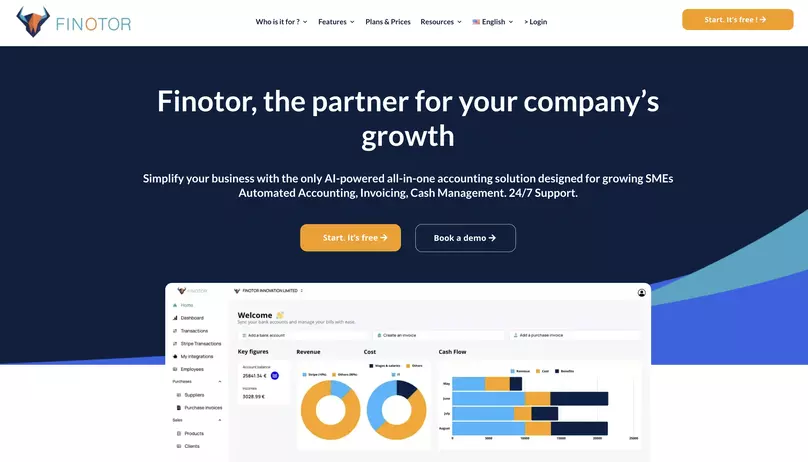Contents
Working capital is a vital aspect of any business, and e-commerce companies are no exception. It refers to the amount of money a company has available to meet its short-term obligations, such as paying bills and buying inventory. Having a positive working capital means that a company has enough liquidity to meet its current financial needs, and is generally considered a healthy sign for a business. On the other hand, a negative working capital can be a warning sign of potential financial difficulties.
For e-commerce companies, working capital is especially important due to the unique challenges they face. For example, managing inventory can be difficult when dealing with a wide variety of products and fluctuating demand. Additionally, e-commerce companies often have to deal with longer payment terms from customers, and may have to wait longer to get paid.
Given the importance of working capital for e-commerce companies, it’s essential that they take steps to optimize it. This article will provide tips and techniques for e-commerce companies looking to improve their working capital. We’ll start by providing an overview of working capital and its importance in e-commerce, and then dive into specific factors that affect working capital in e-commerce. We’ll also provide case studies of companies that have successfully optimized their working capital, and conclude with additional resources for further learning.
In this article, you will learn about the different techniques and strategies for optimizing working capital for e-commerce companies, with a focus on inventory management, accounts receivable and accounts payable, and cash flow management. Whether you’re just starting out in e-commerce or looking to improve your existing business, this article will provide valuable insights and practical advice for optimizing your working capital.
1- Understanding Working Capital
Working capital is a financial metric that measures a company’s liquidity and short-term financial health. It is calculated by subtracting a company’s current liabilities from its current assets. Current assets include cash, accounts receivable, inventory, and other assets that can be converted into cash within a year. Current liabilities include accounts payable, taxes, and other debts that must be paid within a year. A positive working capital means that a company has more current assets than liabilities and is able to meet its short-term financial obligations, while a negative working capital indicates the opposite.
In e-commerce, understanding and managing working capital is crucial for ensuring the financial health and stability of the business. For example, an e-commerce company that has a large amount of inventory but slow-paying customers may struggle to meet its short-term financial obligations, even if it is generating revenue. Additionally, e-commerce companies typically have to deal with longer payment terms from customers, and may have to wait longer to get paid. This can put a strain on the company’s cash flow and make it difficult to meet short-term financial obligations.
Working capital is also important for e-commerce companies that are looking to grow their business. For example, an e-commerce company that is looking to expand its product line or open new warehouses may need to invest in additional inventory and other assets. To do this, the company will need to have a positive working capital to fund these investments.
In summary, working capital is a key metric that e-commerce companies should pay close attention to. It measures a company’s liquidity and ability to meet its short-term financial obligations, and is critical for ensuring the financial health and stability of the business. Additionally, having a positive working capital is crucial for e-commerce companies that are looking to grow their business and make investments in new assets.
2- Factors Affecting Working Capital in E-commerce
In e-commerce, there are several key factors that can affect working capital. These include inventory management, accounts receivable and accounts payable, and cash flow management.
Inventory management
A- In e-commerce, managing inventory can be a complex task due to the wide variety of products and fluctuating demand. Having too much inventory can tie up working capital, while having too little can lead to stockouts and lost sales. Effective inventory management techniques, such as just-in-time inventory and inventory turnover, can help e-commerce companies optimize their inventory levels and free up working capital.
Accounts receivable and accounts payable
Accounts receivable refers to the money that a company is owed by its customers, while accounts payable refers to the money that a company owes to its suppliers and other creditors. In e-commerce, longer payment terms from customers can put a strain on working capital, as the company may have to wait longer to get paid. Similarly, if a company is paying its suppliers and other creditors too quickly, it may be tying up working capital that could be used elsewhere. Negotiating payment terms and implementing electronic invoicing can help e-commerce companies manage their accounts receivable and accounts payable more effectively.
Cash flow management
Cash flow management is critical for e-commerce companies, as they often have to deal with fluctuations in revenue and expenses. For example, an e-commerce company may experience a spike in sales during the holiday season, but then a lull in the months that follow. Forecasting and budgeting can help e-commerce companies anticipate these fluctuations and manage their cash flow more effectively.
E-commerce companies need to pay close attention to inventory management, accounts receivable and accounts payable, and cash flow management in order to optimize their working capital. Effective inventory management techniques, negotiating payment terms, and cash flow forecasting are key strategies that e-commerce companies can use to manage their working capital more effectively.
3- Techniques for Optimizing Working Capital
There are several techniques that e-commerce companies can use to optimize their working capital. These include inventory management techniques, accounts receivable and accounts payable management, and cash flow management strategies.
-
Inventory management techniques
- Just-in-time inventory: Just-in-time inventory is a system where a company only orders and receives goods as they are needed for production or sale. This helps to reduce the amount of inventory that a company has on hand and free up working capital.
- Inventory turnover: Inventory turnover is a measure of how often a company sells and replaces its inventory. A high inventory turnover is generally considered a good thing, as it means that a company is efficiently managing its inventory and not tying up too much working capital in unsold goods.
-
Accounts receivable and accounts payable management
- Negotiating payment terms: E-commerce companies can negotiate payment terms with their customers and suppliers to manage their accounts receivable and accounts payable more effectively. For example, they can negotiate longer payment terms with suppliers in exchange for discounts, or shorter payment terms with customers in exchange for early payment discounts.
- Implementing electronic invoicing: Implementing electronic invoicing can help e-commerce companies manage their accounts receivable and accounts payable more effectively. Electronic invoicing can automate the invoicing and payment process, reducing the time and costs associated with manual invoicing.
-
Cash flow management strategies
- Forecasting: Forecasting is the process of predicting future financial performance. E-commerce companies can use forecasting to anticipate fluctuations in revenue and expenses and manage their cash flow more effectively.
- Budgeting: Budgeting is the process of creating a financial plan for a set period of time. E-commerce companies can use budgeting to manage their cash flow more effectively by setting financial targets and monitoring performance against those targets.
There are several techniques that e-commerce companies can use to optimize their working capital. These include inventory management techniques such as just-in-time inventory and inventory turnover, accounts receivable and accounts payable management such as negotiating payment terms and implementing electronic invoicing, and cash flow management strategies such as forecasting and budgeting. By implementing these techniques, e-commerce companies can better manage their working capital and ensure the financial stability and growth of their business.
4- Case studies to illustrate the optimization of the working capital requirement
A great way to understand how to optimize working capital for e-commerce companies is to look at real-world examples of companies that have successfully done so. Here are a couple of case studies of companies that have implemented various techniques to optimize their working capital:
Case studie : Amazon
Amazon is a well-known e-commerce giant that has optimized its working capital through a combination of inventory management techniques, accounts receivable and accounts payable management, and cash flow management strategies. For example, Amazon uses a just-in-time inventory system, where it only orders and receives goods as they are needed for production or sale. This helps to reduce the amount of inventory that the company has on hand and free up working capital. Additionally, Amazon has a high inventory turnover, which means that it is efficiently managing its inventory and not tying up too much working capital in unsold goods. In terms of accounts receivable and accounts payable management, Amazon has a great reputation for its punctual payments, which allow them to have good relationships with suppliers and also to have better payment terms. As for cash flow management, Amazon has implemented forecasting and budgeting strategies to anticipate fluctuations in revenue and expenses and manage its cash flow more effectively.
Case studie : Zara
Zara is a fashion retailer that has optimized its working capital through effective inventory management. Zara uses a fast fashion model, where it quickly designs, produces and delivers new styles to its stores. This allows the company to respond quickly to changes in consumer demand and reduce the amount of unsold inventory it holds. Additionally, Zara has a high inventory turnover, which means that it is efficiently managing its inventory and not tying up too much working capital in unsold goods. As for accounts receivable and accounts payable management, Zara has a reputation for being prompt with payments and thus, have good relationships with suppliers which in turn allows them to negotiate better payment terms. Zara also uses forecasting and budgeting strategies to anticipate fluctuations in revenue and expenses and manage its cash flow more effectively.
Case studie : Alibaba
Alibaba is one of the largest e-commerce companies in China, and it has optimized its working capital through a variety of techniques. One key strategy that Alibaba uses is a platform-based business model, where it connects buyers and sellers, but does not hold inventory itself. This allows Alibaba to reduce the amount of working capital tied up in inventory and focus on facilitating transactions. Additionally, Alibaba has a high inventory turnover, which means that it is efficiently managing its inventory and not tying up too much working capital in unsold goods. As for accounts receivable and accounts payable management, Alibaba has implemented a variety of digital tools and platforms to automate and streamline the invoicing and payment process, reducing the time and costs associated with manual invoicing.
Case studie : Warby Parker
Warby Parker is an American eyewear company that has optimized its working capital through a variety of techniques. One key strategy that Warby Parker uses is a direct-to-consumer business model, which allows the company to reduce the amount of working capital tied up in inventory and focus on customer service and engagement. Additionally, Warby Parker has a high inventory turnover, which means that it is efficiently managing its inventory and not tying up too much working capital in unsold goods. Warby Parker also uses an efficient order management system that allows the company to track and manage its accounts receivable and accounts payable more effectively.
Case studie : Tesla
Tesla is an American electric vehicle and clean energy company that has optimized its working capital through a variety of techniques. One key strategy that Tesla uses is a vertical integration business model, where it controls the entire production process from design to delivery. This allows Tesla to reduce the amount of working capital tied up in inventory and focus on innovation and design. Additionally, Tesla has a high inventory turnover, which means that it is efficiently managing its inventory and not tying up too much working capital in unsold goods. As for accounts receivable and accounts payable management, Tesla has implemented a variety of digital tools and platforms to automate and streamline the invoicing and payment process, reducing the time and costs associated with manual invoicing.
These case studies demonstrate how e-commerce companies can optimize their working capital through effective inventory management, accounts receivable and accounts payable management, and cash flow management strategies. By implementing these techniques, companies like Amazon and Zara have been able to improve their financial stability and support their growth. These examples show that there are different ways to optimize working capital, and companies can choose the strategy that best suit their own business model and goals.
Conclusion
In this article, we have provided an overview of working capital and its importance in e-commerce. We have discussed the key factors that affect working capital in e-commerce, such as inventory management, accounts receivable and accounts payable, and cash flow management. We have also provided techniques and strategies for optimizing working capital, such as just-in-time inventory, inventory turnover, negotiating payment terms, and implementing electronic invoicing.
We have also provided real-world case studies of companies that have successfully optimized their working capital, such as Amazon, Zara, Alibaba, Warby Parker and Tesla. These examples demonstrate that there are different ways to optimize working capital, and companies can choose the strategy that best suits their own business model and goals.
It is important for e-commerce companies to pay close attention to their working capital and take steps to optimize it. By managing inventory effectively, managing accounts receivable and accounts payable, and managing cash flow, e-commerce companies can ensure their financial stability and support their growth.
Additional resources for further learning are available such as books, articles, and websites that provide detailed information on working capital management, inventory management, and cash flow management. Consulting a financial advisor or accountant can also help e-commerce companies understand and manage their working capital more effectively.









